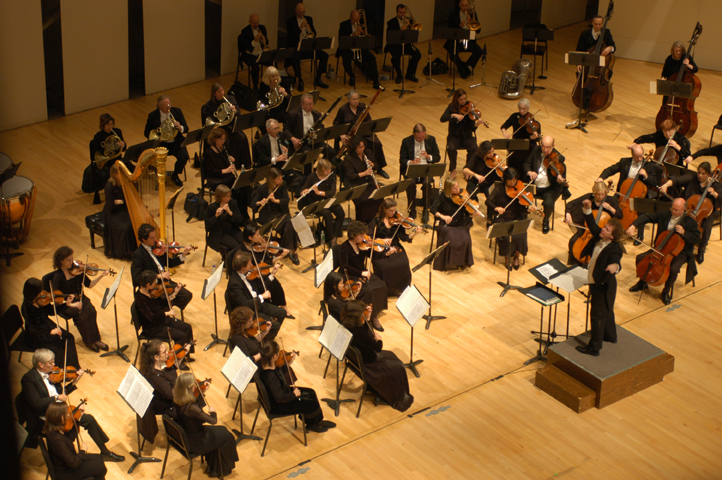Long Island Philharmonic
David Stewart Wiley, conductor Joseph Kalichstein, piano Tilles Center for the Performing Arts, New York June 19, 2010The Long Island Philharmonic has had four Music Directors since its founding in 1979, but none of them has been as effective at communicating intimate, nuanced music with the audience as David Stewart Wiley. Its Music Director for almost ten years, Mr. Wiley enjoys speaking to the audience before many of the pieces the orchestra performs, and those in attendance clearly enjoy it, benefitting from musical examples that accompany that talk because they get a preview—much like a movie trailer—and know what details to listen for. And the Long Island audience needs this added familiarity more than in a major city, where a Mozart symphony isn’t exactly a foreign affair.
Before the performance of Mozart’s Symphony No. 39, Wiley interestingly noted that the first movement may be the first time the waltz (opposed to the Minuet) was incorporated into a symphony. He also rightly mentions the countryside, folk aspect to the symphony as a whole. And that inspires an analogy: Mozart brings the countryside to the symphony, and the Long Island Philharmonic brings the symphony to the countryside, enriching the musical experiences of thousands of Long Islanders, who do not have to leave the suburbs in order to hear great music—or great music-making. Perhaps—quite fittingly—the suburbs of Long Island are the perfect place to hear intimate music.
The performance of the 39th Symphony was indeed given a polished, sparkling and elegant account. The sound of the orchestra is in terrific shape, with special mention going to the solo clarinet and the French Horns for handling difficult moments with effortlessness and beauty. In Beethoven’s Fourth Piano Concerto, excellent pianist Joseph Kalichstein, who often modestly collaborated like he was one of many solo instruments within the orchestra rather than the main soloist, nonetheless gave the kind of briskly-paced performances—in the outer movements—that didn’t always mesh with the ensemble behind him. Still, it was impressively played on both technical and musical fronts, with the slow movement the undeniable highlight, as its darkly solemn and sublime moments were performed with tremendous conviction.
In Bartok’s Romanian Dances, which opened the program, the clarinet solos were playfully and endearingly shaped. The Piccolo solo was played with great sensitivity, creating the character of a wandering, lost soul. Wiley set the mood before each dance and achieved deeply committed performances from the players. The first violin section played with unity of movement—often using their bows fully, from the lower part of the bow (the ‘frog’) to the very tip, which can be a rarity for orchestras.
The intimate musical repertory the Long Island Philharmonic explores is sorely needed, as many orchestras concentrate on the more ostentatiously grand symphonic music and stay away from the more delicate gems. Yet Long Island audiences appreciate the nuances of this delightful music because David Stewart Wiley allows his audiences to savor it all—during the performance, but also before it.

